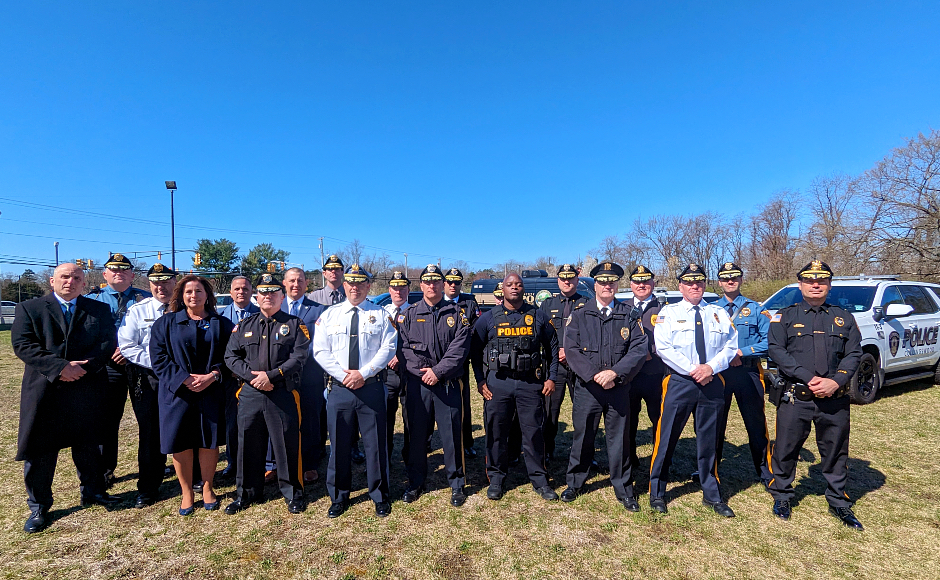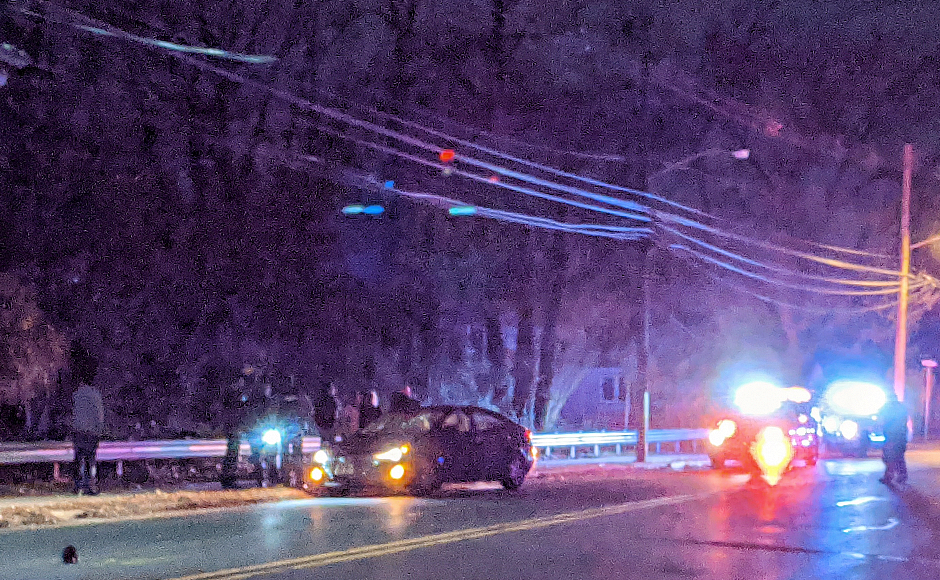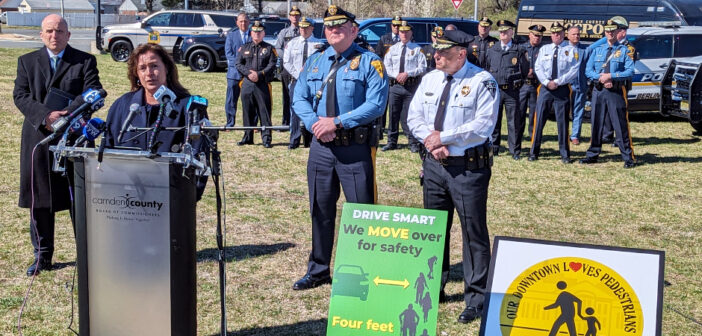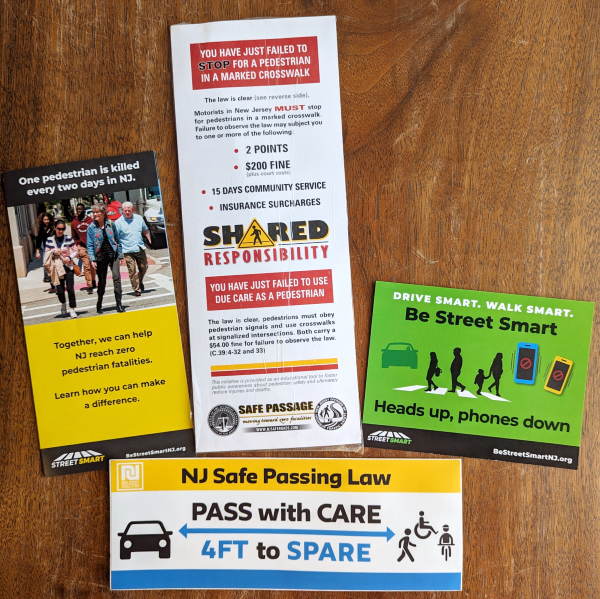The money, which comes from the New Jersey Division of Highway Traffic Safety, supports six months of enhanced police presence, especially in areas where crashes have claimed lives.
By Matt Skoufalos | March 25, 2024

Law enforcement representatives from White Horse Pike communities at the CCPO traffic safety initiative announcement. Credit: Matt Skoufalos.
Law enforcement officials hope that an influx of state funding will help cut down on traffic crashes — and the resultant deaths — on one of the most heavily traveled roads in Camden County.
On Monday, Camden County Prosecutor Grace MacAulay announced that her office was directing $400,000 from the New Jersey Division of Highway Traffic Safety into increased enforcement on the White Horse Pike for the next six months.
Flanked by law enforcement representatives from the 14 Camden County municipalities through which the Pike travels, MacAulay spoke about the need for additional scrutiny to change driver behaviors on a roadway that has seen in 11,251 crashes since 2010.
Of those incidents, 3,894 crashes resulted in injuries, and 80 were fatal to drivers, pedestrians, and cyclists. More than 7,000 of the crashes “involved driver inattention or distracted driving,” and another 692 were related to speeding, the Camden County Prosecutor’s Office (CCPO) reported.
The initiative will place “special emphasis on any locations where an accident has occurred in the last year,” but will not include any new or additional fines, MacAulay said.
“Sufficient penalties exist,” the prosecutor said. “We’re committed to enforcing.”
In addition to writing traffic citations and conducting educational outreach, authorities also will be asked to make notes on infrastructure issues they encounter, such as a lack of lighting, crosswalks, or sidewalks.
Although these highway safety funds are dedicated to traffic enforcement and transportation education, roadway design on the Pike is another consideration underpinning the outreach.
MacAulay pointed out that posted speeds on the roadway range from 25 to 45 miles per hour through Camden County. Drivers also must navigate lane changes and turns that take them across oncoming traffic in parts of the roadway, which travels through dense suburban areas.
Making changes to the roadway design throughout the study area, which runs from Collingswood to Chesilhurst, would require advocacy from municipal governments to state and federal legislators. It’s possible that the results of the enforcement campaign could provide some basis on which to make those requests.
“We can certainly address that,” MacAulay said.
Pine Hill Police Chief Chris Winters believes that the enforcement, public education, and highway redesign considerations all are interrelated.
Winters is optimistic that the renewed commitment shown to safety in the region could produce results that can save lives from the Ben Franklin Bridge to the Pinelands.
“The education piece is huge for pedestrians and drivers, to see who’s not stopping,” the chief said.
“It’s a shared responsibility.”
Winters also says he’s observed a change in general attitudes among the public in the years since the novel coronavirus (COVID-19) pandemic — notably, “a lack of social skills; a lack of socialization — that has given rise to more distracted driving.
“I just think everybody’s focused on their own world,” he said.
Patrick Farley, Director of Cross County Connection Transportation Management Authority (TMA), said he hopes the increased attention to both highway deaths and the variety of users on the roadways will “change the culture around safety.”
“We’ve got to start thinking ahead about these roads and how infrastructure suits them,” Farley said. “Infrastructure’s got to adjust.”
In the meantime, he said, Cross County Connection continues to conduct public outreach, like the federal Safe Routes to School program, which encourages districts to create school travel plans for their students.
“We teach kids skills they need to be safe walking and biking, and hopefully get the parents to be supportive,” Farley said. “I just hope it helps get on peoples’ radars to help understand how decisions behind the wheel impact people. You’ve to be thinking about everybody.”
Kevin Murphy, Director of Safe Streets at the Delaware Valley Regional Planning Commission, spoke about the value of education and enforcement going hand-in-hand to aid traffic safety.
“We’re excited to partner with this effort to raise awareness for the need to make infrastructure improvements as well as increase education and enforcement in this area,” Murphy said.

The scene of a fatal pedestrian crash on the White Horse Pike in Collingswood in 2021. Credit: Matt Skoufalos.
For towns like Collingswood, which participated with Haddon Township in Connect 2020, a multimodal traffic study for the regions, traffic safety on the White Horse Pike has been a persistent concern, especially around the intersection of Collings Avenue.
There, fatal traffic crashes and serious injuries have been reported throughout the past five years.
Connect 2020 spokesperson Sandi Kelly said she’s hopeful that the enforcement protocols will lead to greater changes that could improve safety at that intersection.
“Enforcement is great because people really need to slow down on these roads,” Kelly said. “But infrastructure, intervention, and road diet is really what’s needed.”
Please support NJ Pen with a subscription. Get e-mails, or follow us on Facebook, Twitter, and Instagram.





